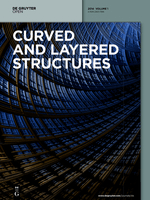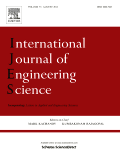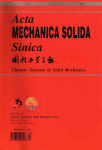
Defence Technology
Scope & Guideline
Leading the Charge in Material Sciences
Introduction
Aims and Scopes
- Advanced Materials and Explosives:
Research on the synthesis, characterization, and application of new explosive materials, including insensitive munitions and nanomaterials, aimed at improving safety and performance in military operations. - Ballistics and Impact Mechanics:
Studies involving the mechanics of projectiles, impact behavior, and penetration mechanisms, including numerical simulations and experimental validations to enhance the effectiveness of military equipment. - Control Systems and UAV Technology:
Development and optimization of guidance, navigation, and control systems for unmanned aerial vehicles (UAVs) and other military platforms, focusing on autonomous decision-making and cooperative strategies. - Thermal and Structural Analysis:
Investigations into the thermal and structural responses of materials and systems under explosive loading and ballistic impacts, including the design and optimization of protective structures. - Microscale and Nanoscale Interactions:
Exploration of the interactions at micro and nanoscale levels in energetic materials and their effects on performance, stability, and safety, including the use of advanced characterization techniques. - Simulation and Modeling Techniques:
Utilization of computational methods, including finite element analysis and machine learning, to predict the behavior of materials and systems under various operational conditions.
Trending and Emerging
- Green and Sustainable Energetics:
There is a growing trend towards researching environmentally friendly and sustainable explosives and propellants, driven by the need for safer materials and compliance with environmental regulations. - Integration of AI and Machine Learning:
The incorporation of artificial intelligence and machine learning in defense technologies is on the rise, particularly in areas such as autonomous systems, target recognition, and predictive maintenance. - Advanced Protective Systems and Structures:
Research focusing on innovative protective systems, including blast-resistant materials and smart armor technologies, is increasing, aiming to enhance survivability in combat situations. - Nanotechnology Applications in Defense:
The application of nanotechnology to develop new materials and enhance the performance of existing ones is a notable trend, particularly in the context of energetic materials and protective coatings. - Cybersecurity in Military Systems:
With the increasing reliance on digital systems, research into cybersecurity measures for military applications is becoming more prominent, addressing vulnerabilities in modern defense systems.
Declining or Waning
- Traditional Explosive Formulations:
Research on conventional explosive formulations is diminishing as the focus shifts to developing safer, more efficient, and environmentally friendly alternatives. - Low-velocity Impact Studies:
Investigations into low-velocity impacts are becoming less frequent, as the emphasis is now on high-velocity impacts and dynamic responses relevant to modern warfare scenarios. - Basic Theoretical Models:
There is a waning interest in simplistic theoretical models that do not incorporate advanced computational techniques, as researchers increasingly prefer more complex simulations that account for real-world variables. - Legacy Weapon Systems:
Research related to older weapon systems and their upgrades is declining, as new technologies and systems are developed and adopted, shifting the focus to next-generation military capabilities. - Conventional Armor Materials:
The study of traditional armor materials is decreasing as attention turns to advanced composites and smart materials that offer better protection and lighter weight.
Similar Journals

ADVANCED MATERIALS & PROCESSES
Transforming Ideas into Innovative Material SolutionsADVANCED MATERIALS & PROCESSES is a vital resource for professionals and researchers in the fields of Materials Science, Mechanical Engineering, and Mechanics of Materials, published by ASM International, a renowned leader in material science publishing. Since its inception in 1985, this journal has aimed to disseminate cutting-edge research and innovative developments in advanced materials usage and processing techniques, contributing to the advancement of engineering applications. Despite its current Q4 quartile ranking in its respective categories, the journal endeavors to elevate the discourse within the field by providing a platform for high-quality articles, reviews, and case studies. Subscribers can benefit from insights into the latest trends and technologies that shape the materials landscape, although the journal is not open access. With its broad coverage and commitment to supporting the academic and professional community, ADVANCED MATERIALS & PROCESSES remains an essential publication for anyone invested in the future of materials innovation.

Moscow University Mechanics Bulletin
Bridging Theory and Practice in MechanicsMoscow University Mechanics Bulletin, published by PLEIADES PUBLISHING INC, is a dedicated journal that has been influencing the fields of mechanical engineering and mechanics since its inception. With an ISSN of 0027-1330 and E-ISSN of 1934-8452, this journal serves as a crucial platform for advancing knowledge in mathematics, mechanical engineering, and mechanics of materials. Though currently indexed in the Q4 category across these disciplines, it offers a unique space for researchers and professionals to engage with emerging theories, experimental results, and practical applications. With a converged publication history spanning from 1973 to 1987, and continuing from 2007 to 2024, the journal remains relevant in today’s academic landscape. Though it operates under traditional access models, the journal's global reach aims to connect diverse voices in engineering research. Aspiring researchers and seasoned professionals alike will find valuable insights and a robust discourse that contribute to their respective fields.

Curved and Layered Structures
Exploring the Intersection of Art and EngineeringCurved and Layered Structures, published by DE GRUYTER POLAND SP Z O O, is a distinguished open-access journal that has been an essential platform since 2014 for academics and professionals in the fields of Aerospace Engineering, Architecture, Building and Construction, Civil and Structural Engineering, and Computational Mechanics. With an ISSN of 2353-7396, it is recognized for its impactful contributions, reflected in its impressive category quartiles, particularly Q1 in Architecture and notable rankings in various engineering disciplines. The journal's scope encompasses innovative research focusing on the intricate designs and applications of curved and layered structures, making it pivotal for advancing knowledge in these areas. The open-access format ensures widespread dissemination of research findings, promoting accessibility and collaboration among researchers and practitioners worldwide. As it navigates its converged years from 2014 to 2024, Curved and Layered Structures continues to attract high-quality submissions that push the boundaries of engineering and architectural design.

INTERNATIONAL JOURNAL OF ENGINEERING SCIENCE
Exploring Cutting-Edge Research for Tomorrow's EngineersInternational Journal of Engineering Science, published by Pergamon-Elsevier Science Ltd in the United Kingdom, stands as a premier platform for pioneering research in the diverse fields of engineering and materials science. Since its inception in 1963, this journal has consistently demonstrated its commitment to advancing academic discourse, maintaining an impressive trajectory that positions it in the Q1 category across multiple engineering disciplines including Mechanical Engineering and Mechanics of Materials as of 2023. With notable Scopus rankings—placing it in the top 5% percentile for Mechanical Engineering and related fields—this journal attracts high-quality, impactful research designed for both industry practitioners and academic scholars. Although it does not currently offer Open Access options, its readership is enriched by comprehensive peer-reviewed articles, fostering a deeper understanding of complex engineering problems and innovative solutions. The International Journal of Engineering Science continues to be an invaluable resource for researchers, professionals, and students committed to pushing the boundaries of knowledge in engineering and materials science.

Korean Journal of Metals and Materials
Exploring the Intersection of Metals and TechnologyWelcome to the Korean Journal of Metals and Materials, a premier publication dedicated to advancing research in the interdisciplinary fields of metals and materials science. Published by the Korean Institute of Metals and Materials, this journal aims to foster the dissemination of innovative findings and significant developments across various domains, including electronic, optical, and magnetic materials, metals and alloys, as well as modeling, simulation, and surface coatings. With a commendable Q3 quartile ranking in several relevant categories as of 2023, it serves as a vital resource for researchers, professionals, and students interested in the latest scientific trends and technological applications. The journal has successfully converged from 2007 to 2024, showcasing a rich archive of knowledge. Engaging with this publication gives readers the opportunity to stay updated with critical advancements and enhances collaboration within the vibrant materials science community. Access is available through various platforms, ensuring that our content is widely accessible to all those striving for excellence in the field.

INTERNATIONAL MATERIALS REVIEWS
Your Gateway to Cutting-Edge Materials ReviewsINTERNATIONAL MATERIALS REVIEWS, published by SAGE Publications Inc, is a leading journal dedicated to the comprehensive analysis of contemporary research in the fields of materials chemistry, mechanical engineering, mechanics of materials, and the study of metals and alloys. With an impressive impact factor and a Q1 ranking across multiple categories such as Materials Chemistry and Mechanical Engineering in 2023, it ranks amongst the top journals for innovative materials research. The journal has a long-standing history since its inception in 1987 and continues to serve as a crucial resource for academics and professionals alike. Although it is not open access, it is renowned for its rigorous peer-review process and its commitment to disseminating high-quality materials science research globally. Researchers, students, and industry professionals benefit greatly from the journal's insightful reviews, both for the advancement of theoretical knowledge and practical applications within the fast-evolving materials field.

ACTA MECHANICA SOLIDA SINICA
Advancing the Frontiers of Solid MechanicsACTA MECHANICA SOLIDA SINICA is a prestigious journal published by Springer, dedicated to advancing research in the fields of Computational Mechanics, Mechanical Engineering, and Mechanics of Materials. Since its inception in 1981, the journal has established a significant presence in the academic community, holding a commendable Q2 ranking across its categories as of 2023. Furthermore, it is recognized for its impactful contributions, with Scopus rankings placing it in the top quartiles, fostering essential discourse among professionals and researchers in the engineering domain. While it operates under a traditional access model, ACTA MECHANICA SOLIDA SINICA continues to provide valuable insights and developments, making it an essential resource for those seeking to deepen their understanding of solid mechanics and related disciplines. The journal remains an influential platform for innovative theoretical and experimental studies, reinforcing its status in the global academic landscape.

World Journal of Engineering
Exploring New Frontiers in Engineering ResearchWorld Journal of Engineering, published by EMERALD GROUP PUBLISHING LTD, stands as a premier platform for disseminating high-quality research across various engineering disciplines. Since its inception in 2014, the journal has built a reputation for its rigorous peer-review process and commitment to advancing knowledge in the fields of Civil and Structural Engineering, Electrical and Electronic Engineering, Geotechnical Engineering, Mechanical Engineering, and Mechanics of Materials. With its categorization in the Q3 quartile across multiple engineering domains and notable Scopus rankings, the journal positions itself as a valuable resource for researchers, professionals, and students seeking to stay abreast of innovations and critical developments in engineering. While the journal currently operates under a subscription model, its comprehensive scope ensures that it remains a vital reference point for contemporary engineering challenges and solutions throughout the United Kingdom and beyond.

Marine Intellectual Technologies
Unleashing potential through open-access marine innovations.Marine Intellectual Technologies is an innovative open-access journal dedicated to advancing the field of marine science and technology. Published by the Research Centre Marine Intelligent Technologies, this journal serves as a platform for researchers, professionals, and students to share their latest findings and developments related to marine engineering, oceanography, and aquatic systems. With its commitment to disseminating high-quality research, Marine Intellectual Technologies plays a pivotal role in fostering collaboration and knowledge exchange among the global marine research community. Although the journal's impact factor is currently under review, its focus on embracing cutting-edge technologies and methodologies positions it at the forefront of marine scholarship, allowing for greater insights into sustainable ocean use and marine resource management. Additionally, the accessibility of research published in this journal supports the ongoing educational pursuits of scientists and practitioners alike, ensuring that important marine research is readily available to all.

Applications in Engineering Science
Transforming Research into Real-World Engineering ApplicationsApplications in Engineering Science is an innovative and highly-regarded open-access journal, published by ELSEVIER in the United Kingdom, focusing on the cross-disciplinary fields of Civil and Structural Engineering, Computational Mechanics, and Mechanical Engineering. Since its inception in 2020, the journal has rapidly established a solid reputation, landing in the Q2 quartile category across multiple engineering disciplines, reflecting its commitment to quality and relevance in the rapidly evolving engineering landscape. With Scopus rankings placing it prominently in the 66th percentile for Computational Mechanics and 58th for Mechanical Engineering, it serves as a vital platform for researchers, professionals, and students alike to share advanced methodologies, innovative applications, and interdisciplinary insights. The journal is committed to fostering open access to cutting-edge research, empowering readers worldwide to stay abreast of significant technological advancements and practical applications in engineering science.